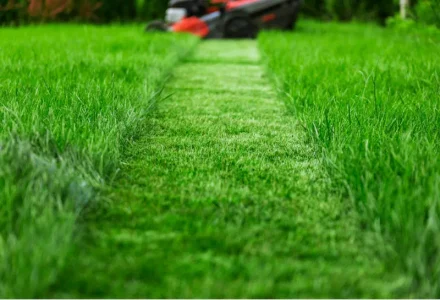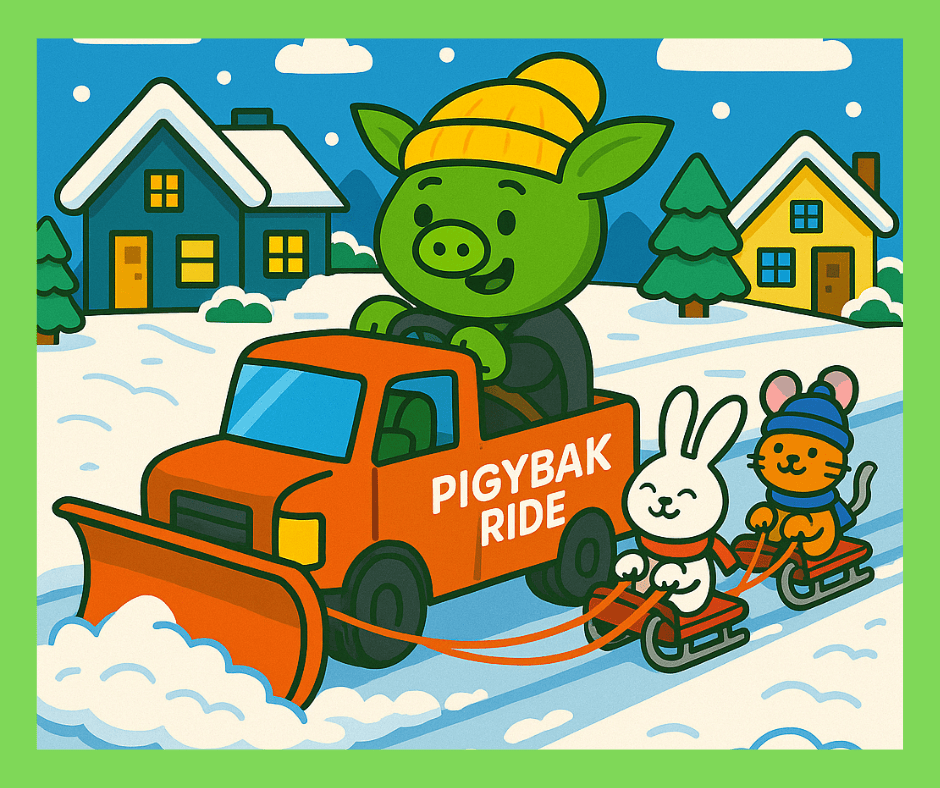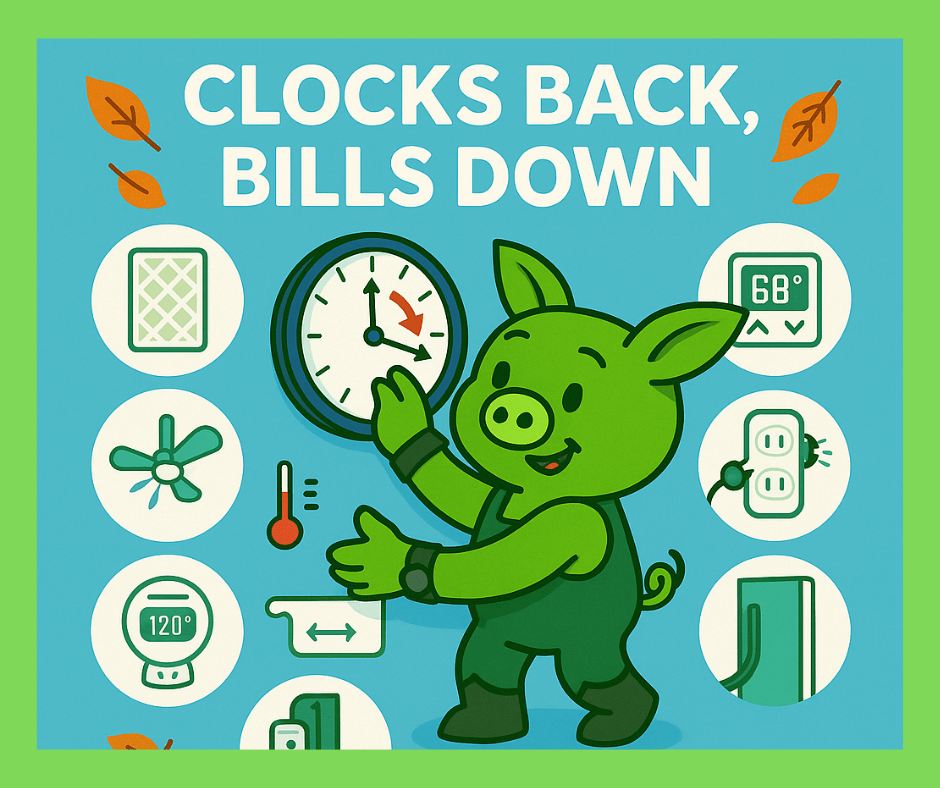
November 21, 2025 | About Us, Sustainable Home Tips

Spring is here, and your first instinct might be to grab the mower and get that lawn looking pristine—but slow your roll. Cutting your grass too soon could actually wreck your lawn’s long-term health and make life harder for pollinators that are just waking up.
That’s why No Mow May (or at least a delayed mow) is catching on. Less mowing means healthier grass, stronger roots, and a buffet for bees and butterflies. Plus, we’ll show you how to team up with your neighbors on Pigybak to book seasonal lawn care at a group rate—because smart choices should also mean smart savings.
Bees, butterflies, and other beneficial insects rely on early-spring wildflowers like dandelions and clover for food. A study from the Xerces Society for Invertebrate Conservation found that reducing mowing frequency can increase bee populations by up to 60%. If you mow too soon, you’re cutting off their food supply just as they’re waking up for the season.
Letting your grass grow out a little in early spring builds deeper roots, meaning it holds water better, withstands summer heat, and bounces back faster. Cutting too soon stresses the grass and makes it more vulnerable to disease. According to Cornell University’s Turfgrass Program, taller grass also shades out weeds, reducing the need for herbicides.
Holding off on that first mow allows organic matter to build up, feeding microbes in the soil. Research from the University of Minnesota Extension shows that taller grass encourages microbial activity, which improves nutrient absorption—meaning less need for synthetic fertilizers.
A thick, healthy lawn naturally keeps weeds in check. The longer the grass, the more it shades out weed seedlings, meaning less need for herbicides. According to Michigan State University’s Turfgrass Science Department, maintaining a lawn height of 3 inches or more can reduce crabgrass by up to 80%.
Experts recommend waiting until your lawn has grown to at least 3.5 to 5 inches before the first cut. This gives roots time to establish properly and ensures pollinators have had enough time to emerge.
🔗 External Resource: Learn more about the best mowing practices from the National Association of Landscape Professionals
Mowing less often doesn’t mean skipping lawn care altogether. Instead of tackling maintenance solo, team up with your neighbors on Pigybak to book group deals on seasonal lawn care.
Start a Lawn Care Group Deal on Pigybak
If you’re looking for an even greener lawn (literally and environmentally), try these alternatives:
🔗 Find Sustainable Lawn Care Experts on Pigybak
Mowing less often is a small change that makes a big impact—for your lawn, your wallet, and local pollinators. Healthier soil, stronger plants, and more buzzing bees mean a thriving, more resilient neighborhood.
So before you start the mower this spring, take a breath. Let nature do a little of the work, then Pigybak your way to a smarter, greener lawn care plan when it’s time to mow.
I, [Customer Name], hereby authorize Pigybak to include my name, phone number, and address in their database. I also opt-in to receive notifications about upcoming services in my area. I validate that the information provided is accurate and represents my personal information, not others.
By providing this authorization, I understand and agree to the following terms:
I authorize Pigybak to set up a profile on my behalf, which may include my name, phone number, and address.
I consent to receiving notifications from Pigybak about upcoming services in my area via text message.
I acknowledge that I have the option to opt out of receiving notifications at any time. I can do so by directly contacting the contractor or managing my preferences in the Pigybak app.
I authorize Pigybak to share my contact information with the contracted service providers for the purpose of facilitating service delivery.
Pigybak agrees not to share my information with third parties without obtaining separate authorization from me.
I understand that Pigybak may update the terms and conditions, and I agree to review them periodically for any changes.
I acknowledge that the standard terms and conditions of the Pigybak mobile application, which can be found at www.pigybak.com/privacy-policy, apply to this authorization.
I acknowledge that this authorization is voluntary, and I have read and understood the terms outlined above. By providing my information, I consent to the terms above.

